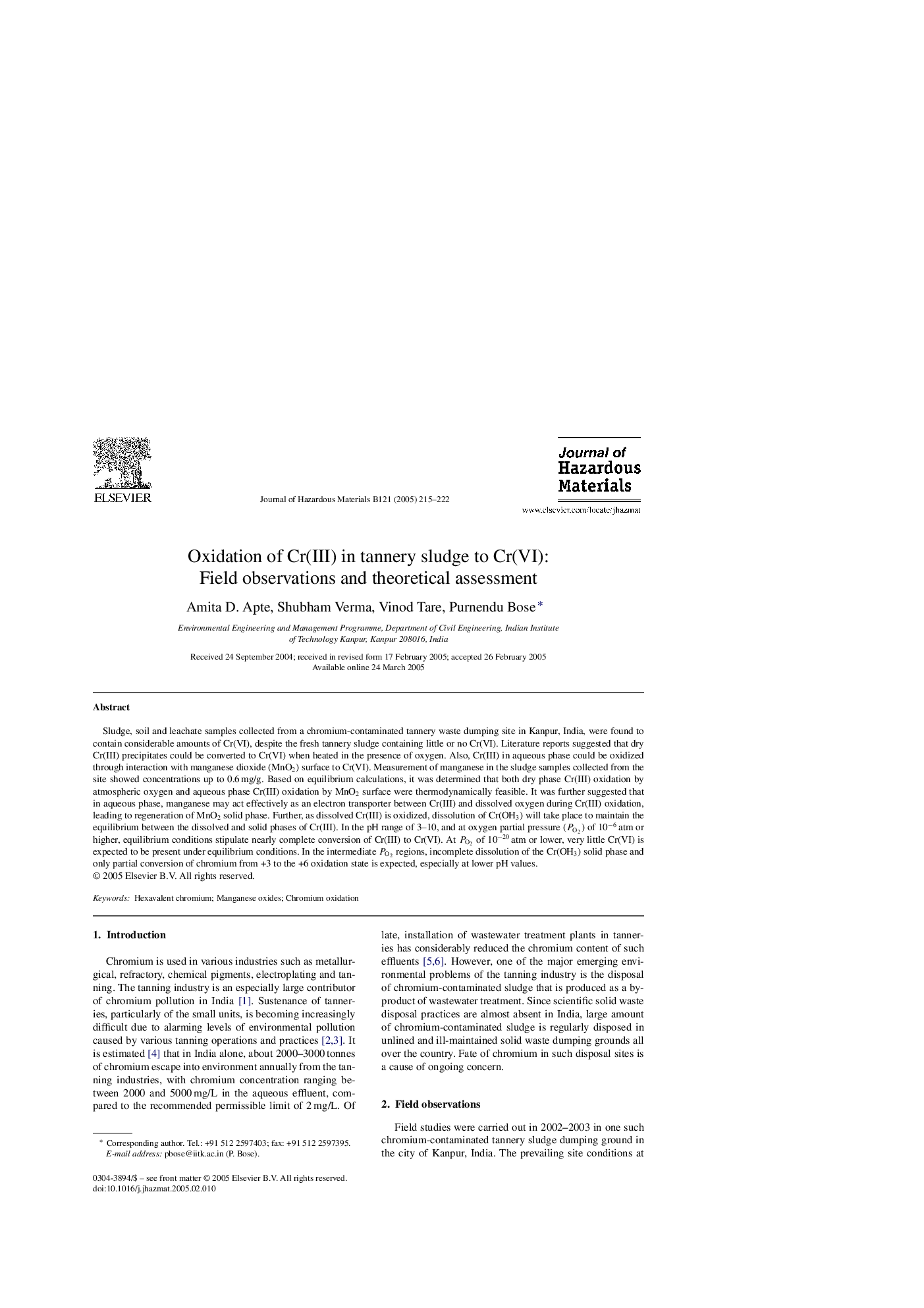| Article ID | Journal | Published Year | Pages | File Type |
|---|---|---|---|---|
| 9674284 | Journal of Hazardous Materials | 2005 | 8 Pages |
Abstract
Sludge, soil and leachate samples collected from a chromium-contaminated tannery waste dumping site in Kanpur, India, were found to contain considerable amounts of Cr(VI), despite the fresh tannery sludge containing little or no Cr(VI). Literature reports suggested that dry Cr(III) precipitates could be converted to Cr(VI) when heated in the presence of oxygen. Also, Cr(III) in aqueous phase could be oxidized through interaction with manganese dioxide (MnO2) surface to Cr(VI). Measurement of manganese in the sludge samples collected from the site showed concentrations up to 0.6Â mg/g. Based on equilibrium calculations, it was determined that both dry phase Cr(III) oxidation by atmospheric oxygen and aqueous phase Cr(III) oxidation by MnO2 surface were thermodynamically feasible. It was further suggested that in aqueous phase, manganese may act effectively as an electron transporter between Cr(III) and dissolved oxygen during Cr(III) oxidation, leading to regeneration of MnO2 solid phase. Further, as dissolved Cr(III) is oxidized, dissolution of Cr(OH3) will take place to maintain the equilibrium between the dissolved and solid phases of Cr(III). In the pH range of 3-10, and at oxygen partial pressure (PO2) of 10â6Â atm or higher, equilibrium conditions stipulate nearly complete conversion of Cr(III) to Cr(VI). At PO2 of 10â20Â atm or lower, very little Cr(VI) is expected to be present under equilibrium conditions. In the intermediate PO2 regions, incomplete dissolution of the Cr(OH3) solid phase and only partial conversion of chromium from +3 to the +6 oxidation state is expected, especially at lower pH values.
Keywords
Related Topics
Physical Sciences and Engineering
Chemical Engineering
Chemical Health and Safety
Authors
Amita D. Apte, Shubham Verma, Vinod Tare, Purnendu Bose,
